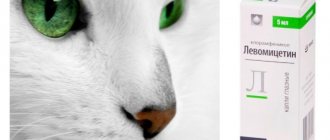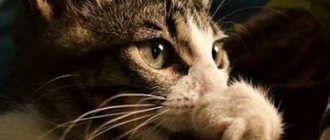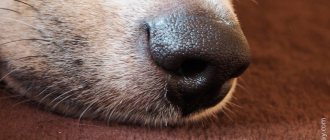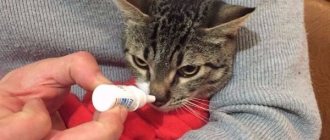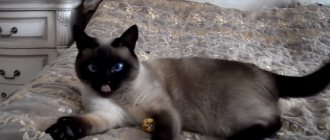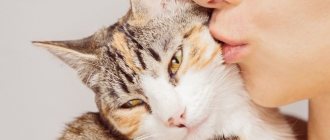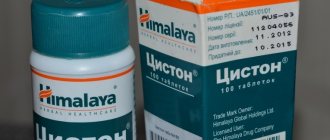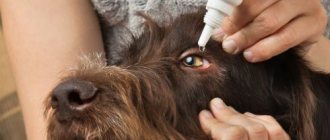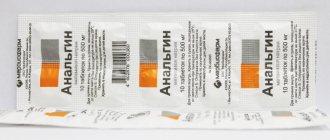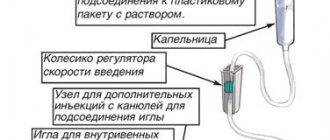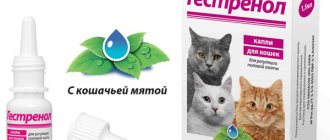Anandin
One of the most common drugs for the treatment of rhinitis. In addition, the medicine can be used in the treatment of diseases of the eyes and ears.
The composition includes glucaminopropylcarbacridone, which has a pronounced anti-inflammatory effect. In addition, the active substance enhances the local and general immune status of the body. The following indications for use are distinguished:
- Rhinitis of bacterial and viral origin.
- The product can be used as an auxiliary medicine in the treatment of fungal inflammation of the nasal cavity (Anandin alone cannot cope with fungi).
- In addition, the medicine helps to cope with rhinitis of allergic etiology.
There are usually no difficulties when using the drug:
- For mild rhinitis, drop two drops into each nostril twice a day. The period of use is approximately a week.
- In the case of rhinitis with moderate and severe intensity of the inflammatory process, the dose can be increased to three or four drops in each nostril, the frequency of use can be increased to three times a day. The duration of use in this case should not exceed two weeks.
How a cold can harm a cat
Rhinitis is preceded by a compensatory reaction. But prolonged exposure to cold increasingly disrupts thermoregulation mechanisms. As a result, the cat becomes hypothermic, its body temperature drops, which leads to malfunctions of various body systems.
At first glance, a cold is a mild ailment, but if the animal does not get help, rhinitis can provoke the development of much more serious diseases, such as:
- inflammatory joint diseases;
- inflammation of the lungs and bronchi;
- kidney diseases, etc.
Among other things, a cold reduces the cat’s immune defense, lowering the body’s natural resistance to infections. And if a pet with a healthy immune system avoids illness by coming into contact with a virus or microbe, a weak animal can suffer serious health problems.
Fosprenil
This remedy is considered one of the most effective antiviral drugs of natural origin. It is produced on the basis of an extract from pine needles, due to which it is completely safe for the health of the animal. The following indications for its use are distinguished:
- Rhinitis of viral and bacterial origin.
- Ulcerative and erosive lesions of the nasal mucosa of any etiology.
But! As a rule, Fosprenil is used as part of combination therapy in the treatment of many infectious diseases , such as “distemper”, infectious peritonitis, canine distemper and calcivirosis. The fact is that the pine needle extract contained in the medicine enhances nonspecific resistance and helps the cat’s body cope with the viral infection.
As a rule, this medicine is prescribed in oral form, but for severe rhinitis (which almost always accompanies viral diseases), it is instilled into each nostril up to four times a day. It is recommended to use the drug for a maximum of two weeks. If you continue to drip it after this period, the risk of developing allergic reactions increases.
Cause Analysis
So, the first, most obvious reason may be a cold . Cats, just like people, are easily susceptible to hypothermia. Open doors, drafts, cold air are all factors for your cat to catch a cold. The cat may have watery eyes, coughing and sneezing, conjunctivitis, a hot nose, and decreased activity in general.
Allergies can be the second reason why a cat has a runny nose. When an animal comes into contact with an allergen, the nasal passages narrow due to swelling, and it becomes difficult for him to breathe. If your cat has an allergic runny nose and you don’t know what exactly the cat is allergic to, you should consult a doctor. If you know, then it will be enough to remove the cause of the allergy, give the cat the usual allergy medicine and put drops into the nose for a runny nose.
IMPORTANT. The most common allergens for cats: dust, mold, household chemicals, (!) flea collar remedy, food (beef, eggs, cereals, carrots).
A foreign body in the nose or an animal swallowed it is one of the atypical but common causes of a runny nose. The body tries to remove the interfering object by secreting mucus. Symptoms: excessive salivation, possible coughing, vomiting, digestive problems, the cat will always try to swallow. Basically, everything goes away on its own, but if the object is too large and the nasopharynx is already clogged and swollen, you need to consult a doctor.
A weak immune system becomes the reason that “all sorts of infections stick to the cat.” Because cats usually have strong immunity. If you are sure that the malaise is not related to the above reasons, you should not delay going to the veterinarian. Only he will be able to prescribe the necessary tests and determine the cause of the ailment.
Bacteria and fungal bodies can cause runny nose in cats. They live in every organism and can be harmless or dangerous. There are several stages of infection: if the infection is mild, your cat will experience slight discomfort, and the discharge will be clear and intermittent. In the acute stage, the discharge will be thick, it can flow without interruption, clog the animal’s nose and form crusts on it. If you suspect your cat has a fungal infection, you should see a doctor for further treatment. Ordinary cold drops and medications in this case will have little effect.
Infectious diseases such as calcivirosis, rhinotracheitis, chlamydia and others will manifest themselves in the first stage as a runny nose and malaise. The difference is in the degree of severity and in the fact that the discharge in this case will be more painful and may be accompanied by fever or diarrhea. Green or yellowish discharge from the nose is a reason for you to think about it.
Chronic diseases , such as diabetes or diseases of internal organs, can cause chronic runny nose in cats. The solution is a trip to the vet.
A more severe case is a tumor in the nose, which the body will try to get rid of by secreting mucus (you can verify the opposite by checking the cat's nasal passages or if this has been going on for a long time). Perhaps this is a tumor that cannot be removed on your own, just consult a doctor.
Sometimes, the causative agent of a runny nose can be acrid odors or inflammation in the ear , gums and teeth, which spreads to the nose.
Also, the cause of a runny nose in a cat can be congenital diseases and deformations of the animal’s nasopharynx. You can only check this by going to the vet.
This is interesting: Why does a cat hide his nose?
Maxidin
Another drug that can also be instilled into a cat's nose, and which is a good immunomodulatory agent. The main active ingredient is germanium pyridine-2,6-dicarboxylate. A substance with such a difficult name has a very good effect on the animal’s body:
- It increases nonspecific resistance.
- Accelerates regeneration processes, allowing damaged mucous membranes to heal faster.
It can be used in the following cases:
- Infectious rhinotracheitis.
- Calcivirosis.
- For rhinitis due to severe hypothermia, etc.
The method of application is extremely simple: three to five drops of the drug are instilled into each nostril. Frequency of use – up to five times a day. In addition to treating the nasal cavity, it is recommended to irrigate the pet’s mouth at the same time (dose - up to 0.5 ml at a time). This will speed up the healing process. The duration of treatment is up to two weeks in a row.
Thymogen
In fact, this medicine can be considered an analogue of Maxidin: the drug also has a pronounced immunomodulatory effect and has a beneficial effect on the pet’s immunity. The main active ingredient is alpha-glutamyl tryptophan. The product is gentle and very effective:
- It increases the speed of regeneration processes so much that it is recommended for use for ulcerative rhinitis.
- Significantly increases nonspecific resistance, which is why it is very effective in the treatment of pathologies of viral origin.
Two drops of the drug are instilled into each nostril. Frequency of use – once a day. The duration of treatment is up to five days in a row, but if necessary, this period can be significantly extended.
“Human” drugs for the common cold
Now let’s consider a situation that is probably familiar to many experienced breeders: the cat’s nose is “running”, but the above-described drugs are not at hand (or a drug with a vasoconstrictor effect is needed). There is a considerable temptation to help your pet by using some drops from your home medicine cabinet. Is it possible to do this?
In most cases you shouldn't do this. The reason is simple - such drugs have not been certified for use in veterinary medicine; how the animal’s body will react to their use is a very big question. But still, in situations where there is no other alternative, it is allowed to use some drugs.
Treatment at home
There is no universal way to cure a runny nose in a cat at home. It all depends on the disease. For example, if you have a cold, it is recommended to give your cat food with a high content of vitamins A and C.
If a cat has a runny nose and is sneezing, it is not the symptoms that should be treated, but the cause of the disease. However, this is usually not possible at home, so you can simply reduce the overall inflammation.
What to wash with?
The easiest way to cure a runny nose in a cat is to drip medicine into the nostrils. Although this will not help if you have a serious illness, it will help relieve symptoms. You can bury:
- aloe juice 1 drop once a day for a week;
- boiled beet juice 1 drop 2 times a day for 5 days;
- saline solution - 2-3 drops 2-3 times a day for a week;
- Naphthyzin (for children) - 1 drop 1 time per day for 4 days.
The listed remedies are folk methods for treating a runny nose in a cat at home. They may cause allergies or have no effect. If the animal is suffering from a bacterial infection, these methods will not help, since antibiotics are required, which are taken orally.
If the disease is associated with injury and flows from only one nostril, it is better to use ointment to speed up regeneration. And wipe only where the wound is located.
How to rinse and instill nose
It’s clear what medications to use and what to do if your cat has a runny nose. However, the next question is how to instill or rinse the nose, because the kitten is unlikely to calmly endure this procedure.
As with any unpleasant procedures, the cat must first be immobilized: wrapped in a towel, placed in a sock or pant leg. The main thing is to press the paws to the body so that it cannot escape or scratch the owner.
Remedies for the treatment of runny nose in cats at home should be instilled using a pipette. The liquid should be at room temperature. It is imperative to adhere to the dosage so as not to dry out the mucous membrane.
In addition to instillation, other methods can be used. For example, a good way to cure a runny nose in a cat at home is heating it with warm salt or an ultraviolet lamp. But, if traditional methods do not help, and the snot does not go away for more than a week, you should contact the clinic.
Source
List of medications for the common cold suitable for cats
- Naphthyzin. The medicine is extremely controversial, but its vasoconstrictor effect is excellent. It is recommended to mix it with water and dexamethasone in a 1:1:1 ratio. In this case, the drops will help the cat breathe, and the inflammatory process will be relieved. Attention! When using Naphthyzin, the risk of developing allergic reactions is quite high, and therefore antihistamines should always be on hand! Drip no more than one drop into each nostril, no more than twice a day, and no longer than three days in a row.
- Derinat. It is quite an effective remedy, and due to its “softness” the medicine is often used in pediatrics. You can drop two drops into each nostril, up to three times a day, for three days in a row (after consultation with a veterinarian, it can be longer).
- Pinosol. It is not suitable for all animals (and not all people), but it is a natural and quite effective drug. You can drip two or three drops into each nostril, up to three times a day, the duration of treatment is up to a week. But! The risk of allergies is high, so you need to keep antihistamines in stock.
- Protargol. Well suited for the treatment of purulent rhinitis. Two drops in each nostril three times a day, for up to four days in a row.
- Vibrocil. It is also a fairly safe medicine, often used in pediatrics. You can instill one drop into each nostril, up to two times a day. Duration of treatment is up to five days (in some cases it is allowed to use the drug for a whole week).
Important! Let us repeat once again that all these drugs, despite all their effectiveness, are not initially intended for use in veterinary medicine. Their use is potentially dangerous, and therefore the owner can use such drops solely at his own peril and risk! We advise you to consult your veterinarian.
Common diseases
Classification of eye pathologies in cats, symptoms characteristic of each disease:
| Disease | Description and symptoms |
| Conjunctivitis | Occurs due to the entry of a foreign body, trauma to the mucous membrane, exposure to chemicals, and diseases of infectious origin. Characterized by swelling in the eyelid area and a large volume of purulent discharge. The disease can be transmitted from a sick cat to a healthy one. |
| Glaucoma | An increase in pressure in the eyeball can cause clouding of the cornea. The pathology often causes blindness. |
| Keratitis | Inflammation of the cornea is observed with clouding of the mucous membrane of the eyes and increased tearing. |
| bulging eye | Protrusion of an organ occurs due to its damage or the development of a neoplasm. Pathology is fraught with organ loss. |
| Violation of the lacrimation process | Blockage of the tear duct, as well as excessive secretion of fluid. The animal experiences severe discomfort, and the ability to see deteriorates. |
| Cataract | Characterized by clouding of the lens. The eye becomes smoky usually in adult animals and cats suffering from diabetes. |
To prevent the development of any eye disease, a systematic examination of your pet by a veterinarian is required. Without timely treatment, not only a malfunction of the visual system is possible, but also an increased risk of vision loss.
